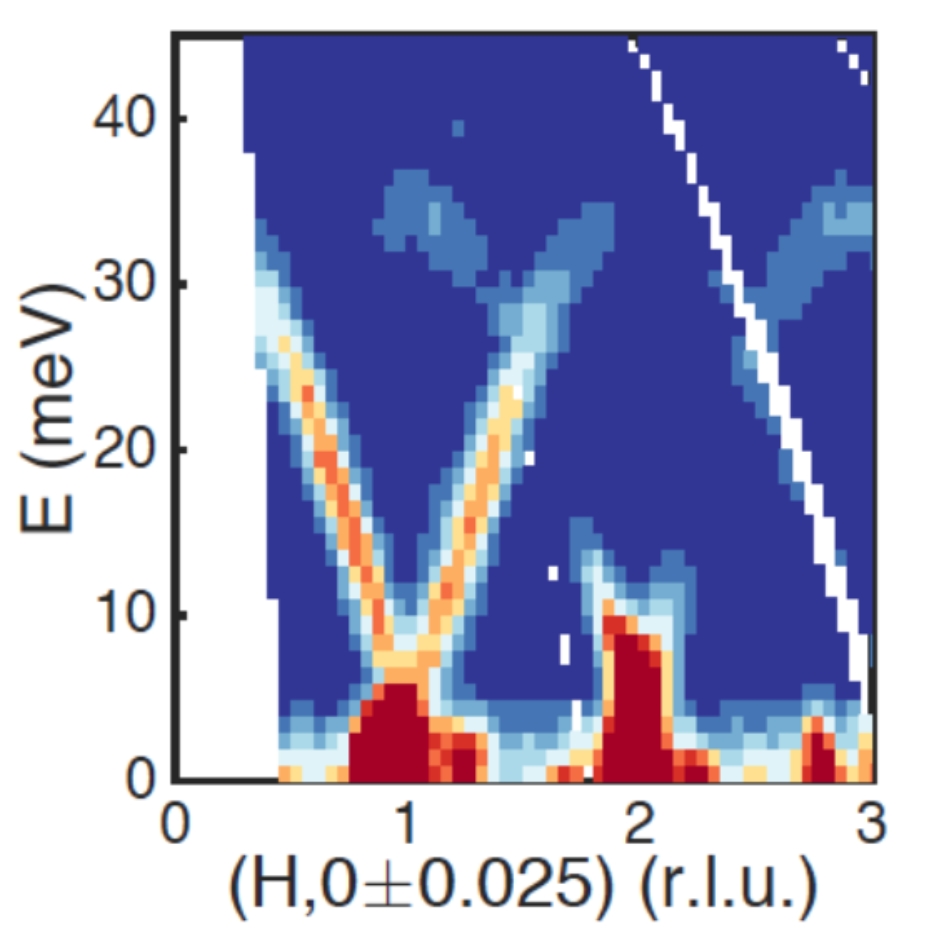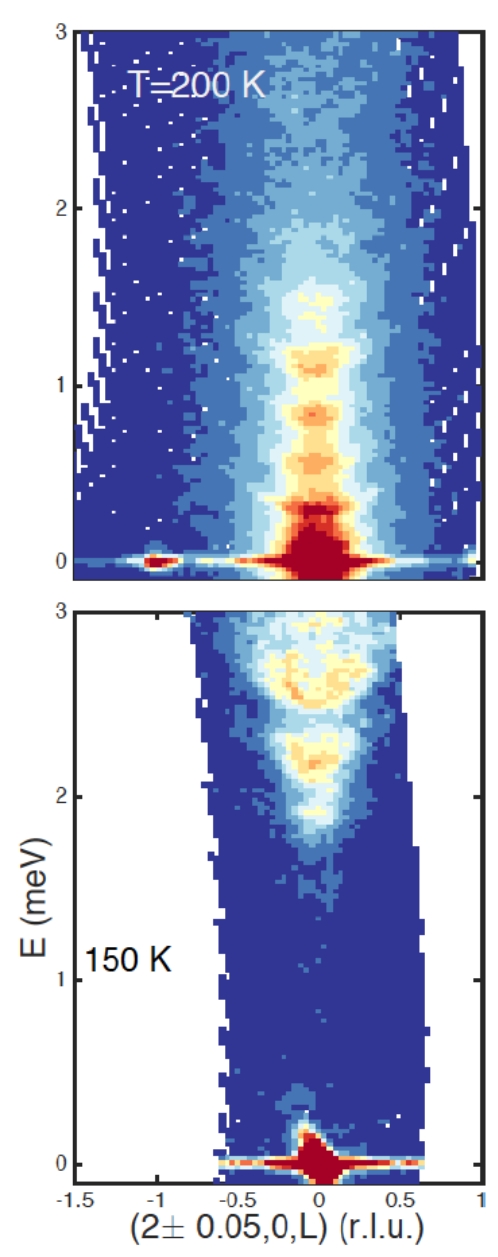An international group of scientists have been using neutrons to study calcium ferrate to understand how different magnetic arrangements are distributed throughout the material. Surprisingly they found that the phases existed in tiny regions only a few nanometres across, containing localised waves of magnetic excitations. This discovery could lead to the use of magnetic materials in a similar fashion to photonic crystals. Their work has been published in Physical Review Letters.
Materials that display this kind of behaviour, where waves do not propagate through the bulk but are trapped in localised regions afford the possibility of studying unusual quantum behaviour. Applications of this physics can be found in photonic crystals, in which light becomes trapped and can be used to enable processing of laser light on microchips. The most commonly known way of creating localisation is to break up a material’s periodic structure, however it can also be done without breaking the structure’s periodicity if the interactions within the structure are strongly non-linear.
Calcium ferrate (CaFe2O4) is an antiferromagnet with a large moment of S=5/2 on each iron atom, making it behave semi-classically rather than being fully governed by quantum mechanics. There are two possible ways of arranging the iron magnetic moments – in a pattern of up-up-down-down (called the A phase) or up-down-up-down (the B phase), and these arrangements actually coexist at low temperatures. A team of researchers from the Universities of Edinburgh, Kent, Birmingham, Maryland and Rutgers, together with colleagues at ISIS, ILL, NIST, PSI and Juelich have shown using a variety of different neutron scattering techniques that the competition between the A and B phases results in antiphase boundaries between different magnetic regions that are only a few nanometres across.
Chris Stock from the University of Edinburgh led the study. He says, “We found that inside these tiny regions there are localised waves of magnetic excitations, which we call “solitary magnons”. This is the first time localisation of this nature has been observed. This could lead to the use of magnetic materials in a similar fashion to photonic crystals, where the systems could act as spin-wave guides and provide new magnetic logic or storage devices.”

MAPS data that allowed the team to confirm the that the 2-dimensional magnetic structure and the strength of the magnetic interactions between the iron atoms.
View full-size image
The work at ISIS involved measurements on the MAPS and OSIRIS spectrometers. Russell Ewings from ISIS says, “This was an interesting study as it used a wide range of neutron instruments from multiple facilities. At ISIS the work on MAPS helped to identify the strength of the magnetic interactions between the different iron atoms. This showed that the coupling is essentially two-dimensional in character, facilitating the formation of the antiphase boundaries”. Franz Demmel, also from ISIS, added, “The work on OSIRIS utilised the instrument’s excellent energy resolution to measure the solitary magnons directly. The team observed a series of discrete energy levels that could be explained well by using theories originally developed in atomic physics in the 1920s by Alfred Landé to explain the splitting of energy levels in intermediate mass atoms.”

OSIRIS data showing how the energy levels of the solitary magnons are affected by changes in temperature.
View full-size image
Russell Ewings
Research date: August 2016
Further Information
